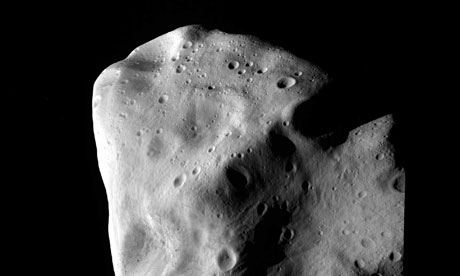A battered asteroid that was intercepted and surveyed by a European spacecraft last year may be the ancient remains of a planet that never formed, scientists say.
Fresh analysis of measurements taken from the European Space Agency's Rosetta probe found evidence that beneath the cracked and cratered exterior of asteroid 21 Lutetia was a molten, metallic core.
The findings, if confirmed, suggest the giant rock is a "planetisimal", a remnant of the early solar system that represents a wholesale jerseys snapshot of planetary development, rather than a fragment of a larger asteroid or a cosmic pile of rubble.
The Rosetta probe swung by the speeding asteroid in July 2010 at a distance of 282 million miles from Earth. At the time, Lutetia was the largest asteroid to have been visited by a spacecraft.
Close-up images of Lutetia revealed a surface scarred with large cracks and impact craters, evidence of the asteroid's long and battered history. The lump of space rock measured 121km long, 101km tall and 75km wide.
Infrared cameras aboard Rosetta found the surface temperature of the rock never exceeded -19C. Further measurements of the asteroid's density surprised scientists, because they suggest that the asteroid's interior has a dense, metallic core.
Benjamin Weiss, a planetary scientist at Massachusetts Institute of Technology who was involved in the study, said a molten core within Lutetia might indicate "hidden diversity" within the broader asteroid belt. "There might be many bodies that have cores and interesting interiors that we never noticed, because they're covered by unmelted surfaces," he said. "The asteroid belt may be more interesting than it seems on the surface."
If Weiss is right, Lutetia is a case of arrested development. The asteroid may have grown large enough to develop and retain a melting core, but then avoided the larger collisions that drive planet formation. It would be the first asteroid known to be partially differentiated, that is having a melted interior overlain by cooler layers. An international team of researchers describe the findings of the Rosetta fly-by in three papers published in the journal Science.
The spacecraft has flown past a number of asteroids since its launch in 2004 en route to the comet 67P/Churyumov-Gerasimenko in 2014. On arrival, Rosetta will release a small lander onto the icy comet and spend the next two years orbiting the asteroid as it heads towards the sun.
